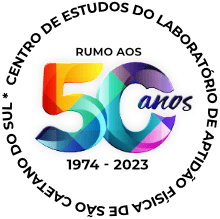CELAFISCS contribuitions to Sports and Physical Activity Science: a tribute to 50 years of history
Article published in the Brazilian Journal of Physical Activity and Health – Luiz Guilherme Grossi Porto, Guilherme Eckhardt Molina, Lamartine Pereira DaCosta, Isabella Lima Ramos, Felipe Donato Vargas, Laércio Elias Pereira, Américo Pierangeli Costa
Palavras-chave
Introduction: The Center for Studies of the Physical Fitness Laboratory of São Caetano do Sul (CELAFISCS) is a research and intervention center with broad national and international recognition. In 2024, CELAFISCS will complete 50 years of uninterrupted activity.
Objectives: Through a theoretical essay, the objective was to pay tribute to the 50 years of CELAFISCS, based on the recovery of its main contributions to the Sciences of Sports and Physical Activity.
Development: The complex task of summarizing the most relevant contributions of CELAFISCS was carried out through documentary analysis and testimonies, in three parts: historical aspects, material contributions (tangible) and immaterial contributions (intangible). The material contributions were analyzed in light of the scientific production and training of human resources by the members of the successive boards of CELAFISCS during this period. The immaterial contributions analyzed the impacts of the rapprochement of Brazilian science with the most important scientists and institutions in the world, of projects to promote physical activity, such as Agita São Paulo, in addition to the social commitment and vision of the future, which are recognized characteristics of CELAFISCS.
Final Considerations: The findings demonstrate that in these 50 years, CELAFISCS has had an equitable distribution by gender, a predominance of training in physical education and a high proportion of members involved in research. CELAFISCS has generated a highly significant contribution to Sports Sciences and Physical Activity in Brazil, both in academic production and in the training of human resources, justifying the necessary recognition of its essential importance for the development of these two major areas.
